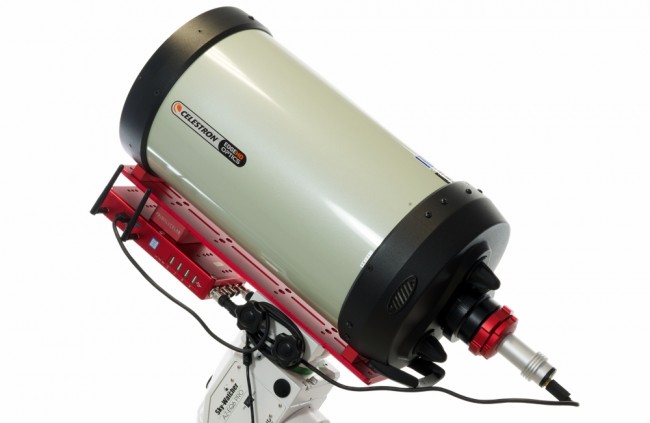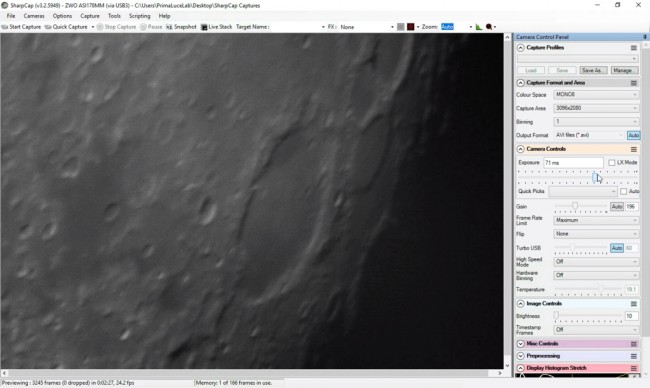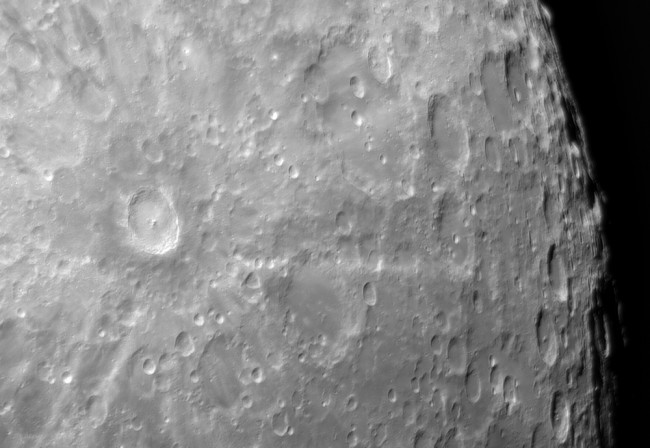High resolution astrophotography of planets and the Moon with powerful telescopes and planetary cameras is simpler with the EAGLE. In order to record the best pictures with telescopes, planetary cameras (usually USB 3.0) are used and are connected to a control computer where a special software allows recording a video. A special processing software allows you to extract only the best and sharper images, stack them and apply contrast filters to improve the visibility of planets and Moon details.
In order to get the best results in high resolution astrophotography, you can use planetary cameras that allow you to record videos with high fps (frames per second): the greater the number of images in your video, the more the images (not distorted by atmospheric turbulence) that you can stack to get a better result. This is why we usually use special planetary cameras that connect to computer (where the video is saved) with a fast USB 3.0 connection. This creates some limitations because the control computer must be equipped with a powerful processor and a fast and large storage to save these videos that usually are very large (many gigabytes each). Furthermore, it is not possible to have the computer far away from the telescope because the planetary camera must be connected to it via a USB 3.0 cable that can’t be too long, usually no more than 3 meters.
But by using the EAGLE for high resolution astrophotography of Moon and planets instead of a normal laptop we will avoid all these limitations. In fact, since the EAGLE is installed directly on the telescope, the planetary camera is now connected with a very short USB cable and the video is saved directly on the internal SSD drive of the EAGLE while you can see the image in real time on the device you use to remotely control the EAGLE and your telescope. This way, especially if you also have a focusing motor like our SESTO SENSO, you can control your telescope remotely (since EAGLE allows you to connect to any device such as mounts, via the ASCOM platform) for high resolution astrophotography of Moon and planets. For example, you can stay in the car or at home while the telescope is outside.

EAGLE has a fast internal SSD storage and, especially for models with faster processor, it’s the perfect system for high resolution astrophotography of Moon and planets since it also allows you to save large high-resolution videos with high fps. We tested several cameras with an EAGLE3 S and recorded these values with SharpCap software:
ASI178MM: 24 fps at 3096×2080 with mono video in AVI 8 bit format
ASI178MM: 18 fps at 3096×2080 with mono video in SER 16 bit format
Obviously by reducing the resolution of our video (cropping only the region of interest area) you can significantly increase the recorded fps (even reaching 100 fps). In addition, since the EAGLE uses Windows 10, you can use the high resolution astrophotography capture software that you prefer, as well as being able to choose the planetary camera that best suits your telescope and budget. Among the capture software for example you can use SharpCap or FireCapture.

One of the most appreciated advantages of the EAGLE in high resolution astrophotography of Moon and planets is that it also provides an help for telescope collimation. In fact, after pointing a star to verify collimation, you can view the image in real time on a portable device such as your smartphone. In this way you can easily collimate the telescope by acting on the collimation screws and observe in real time the image on your portable device. Tips for a precise collimation: use the Bob’s Knobs collimation screws instead of the standard screws (if available for your telescope) to collimate by hand as you see in the picture below, wait for the telescope to be in thermal equilibrium (for example for the EdgeHD 925 we waited 45 minutes) and point it to a star at least 30 degrees above the horizon.

Another advantage of using EAGLE for high resolution astrophotography of Moon and planets is that you can easily process the video in real time using one of the many planetary processing software for Windows, such as Autostakkert or Registax that you can install in the EAGLE. This way you can easily get a preview of your final image and if you do not like something, you can quickly record a new video. Finally, if you record your videos in SER format (recommended since it allows you to keep more dynamic range in your videos and therefore have better results) you can install the SER Player software in the EAGLE that allows you to view the recorded SER videos.

